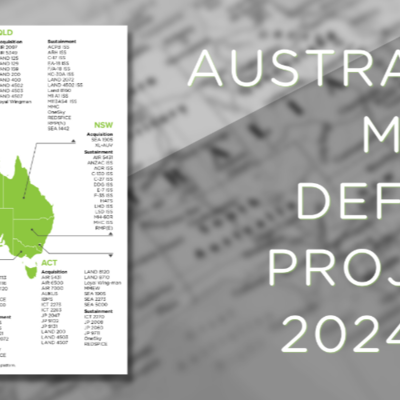
You’ve probably heard the terms “above the line” and “below the line” thrown around a lot in the Defence Industry. But what’s the difference between the two – and what does it mean for you?
Above the Line (ATL) organisations are working on behalf of the Commonwealth (Defence). When the Australian Defence Force (ADF) has a capability requirement, ATL companies help Defence define it, acquire it and sustain it. ATL people tend to approach projects at a concept level, and help Defence evaluate their needs and assess outcomes.
Below the Line (BTL) organisations, on the other hand, are tasked with delivery of the contracted capabilities. They’re the ones who get into the detailed design and delivery aspects of a given piece of equipment or system.
When it comes to working above or below the line as an employee, there are considerations on both sides. Our Director, Raj Kutty, explains the key differences.
ABOVE THE LINE
The role of ATL organisations is to understand the higher-level capabilities required by the ADF, assist in the concept development, management of the tender process, contract negotiations, governance and reviews, and ensure the project is properly delivered. It’s important to note that this work is always being undertaken on behalf of Defence.
ATL will help the ADF define what the capability requirement is and develop a Request for Tender (RFT). ATL also contribute to tender evaluation to make sure that Defence engages the right BTL solution.
Commonly, Defence appoints ATL support through the Capability Acquisition and Sustainment Group’s (CASG) Defence Support Services (DSS) panel.
So, what are some of the hallmarks of working ATL?
- Part of the definition of the capability, including direct conversation with the ADF on the requirements
- Assist with executing and shaping the strategy involved, with good ability to influence the outcome for the ADF
- Focus is on defining requirements, managing contractors and governance
Some other things to consider:
- Focussed on strategy and governance rather than the design
- Roles are often based at Defence sites.
BELOW THE LINE
Once a tender has been released to market, it’s up to BTL to bid for it.
BTL organisations interested in winning the project will put in a bid for the work, including planning, designing, and presenting a solution that they believe meets the capability requirement. After a thorough assessment and negotiation phase, the successful BTL company will be awarded the contract. That’s when they can get cracking with the project.
The role of BTL is to build, test, integrate, and coordinate the completion and delivery of the capability throughout the tender process. The details they need to deliver on include timelines, budget, workforce, and project specifications. The ATL organisations will work with them to oversee the delivery phases, assess their progress, and give feedback according to the needs of the ADF.
Working BTL, you’ll see a lot of the following:
- Work within a dynamically changing environment with a commercial focus
- Allows for more innovative thinking, sometimes involving designing from a ‘blank canvas’
- Able to experience different phases of the project lifecycle
- Encouraged to develop a well-rounded commercial and engineering skillset
It’s also worth noting:
- Beholden to historically set project deadlines and budgets
- Potentially less opportunity to influence the bigger picture
- Can be challenging to marry the requirements set during RFT phase with current industry trends, such as increases in salary expectations, labour costs and availability of talent
THINKING ABOUT MAKING A MOVE?
There are a few more things I’d urge you to consider.
- It’s easier to move from a BTL organisation to ATL, whereas moving from ATL to BTL can be more challenging – especially if it’s your first career move
- The skill sets needed to work ATL can vary a lot and change a lot more frequently than you might find in the BTL space
- Working ATL means have you to think big, and view projects at a concept level
We’re seeing a slight trend towards integrating ATL and BTL work. There are a few reasons for this, but it is mainly happening where there are opportunities to realise process efficiencies and associated cost savings. How far this trend will go, and what it means for Industry, is a bit of an evolving picture.
Moving from above to below the line – or vice versa – might mean taking a slight pay cut in the short term, but it will vastly improve your industry experience and can do wonders for your professional growth and progression. If you can make the most of that opportunity, you’ll see a payback later.





.jpg)